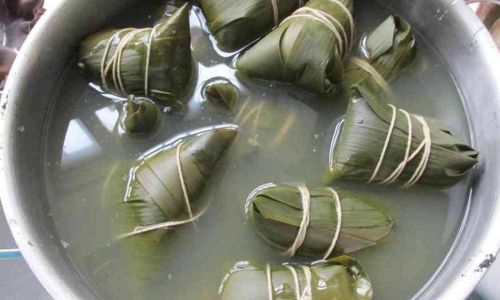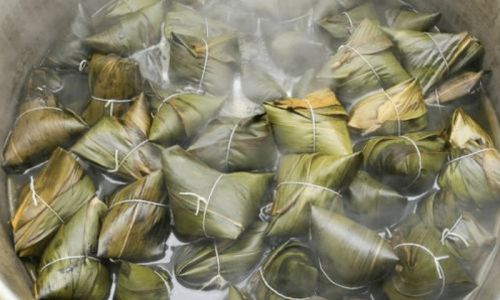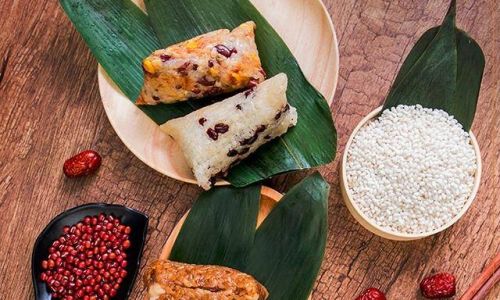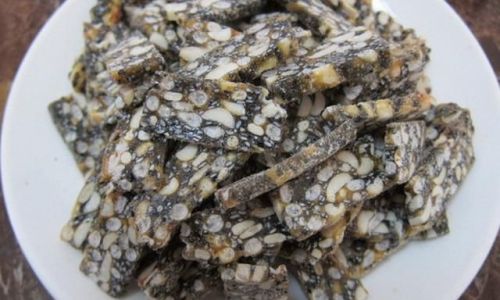Zongzi, those pyramid-shaped parcels of glutinous rice and savory or sweet fillings wrapped in bamboo or reed leaves, are a beloved staple of Chinese cuisine, particularly during the Dragon Boat Festival. These aromatic treats, steeped in centuries of tradition, have sparked a debate among home cooks and food enthusiasts alike: What is the optimal method for cooking pre-wrapped zongzi—steaming or boiling? While both techniques yield delicious results, each approach offers distinct advantages and considerations that can influence texture, flavor, and overall culinary success. This article delves into the science, culture, and practicality behind these two cooking methods, guiding readers to make an informed choice based on their preferences, equipment, and desired outcome.

The Cultural Significance of Zongzi
Before dissecting cooking techniques, it is essential to appreciate the cultural weight of zongzi. Originating over 2,000 years ago to honor the patriotic poet Qu Yuan, zongzi symbolize unity, resilience, and respect for heritage. Today, they are enjoyed worldwide, with regional variations in fillings (such as pork, red bean paste, or salted egg yolk) and wrapping styles. Despite these differences, the cooking method remains a pivotal step in preserving the dish’s authenticity. Whether steamed or boiled, the goal is to achieve perfectly tender rice, harmonized flavors, and leaves that impart a subtle earthy fragrance without disintegrating.
Steaming Zongzi: A Gentle Approach
Steaming is often hailed as the more delicate cooking method, favored for its ability to retain moisture and shape. When zongzi are placed in a steamer basket over simmering water, the indirect heat circulates evenly, gently cooking the rice and fillings without direct immersion. This method is particularly advantageous for pre-wrapped zongzi, as it minimizes the risk of the leaves splitting or the rice becoming waterlogged.
Advantages of Steaming:
- Texture Preservation: Steaming maintains the integrity of the rice grains, resulting in a slightly firmer, less sticky texture compared to boiling. This is ideal for those who prefer a bit of “bite” in their zongzi.
- Flavor Concentration: Since the rice absorbs moisture primarily from the steam rather than the cooking liquid, the natural flavors of the fillings and leaves remain more pronounced.
- Energy Efficiency: Steaming typically requires less water and shorter cooking times, making it a sustainable option for small batches.
How to Steam Zongzi:
- Prepare the Steamer: Fill a large pot or wok with 2–3 inches of water and bring it to a rolling boil. Place a steamer basket or rack above the water, ensuring it does not touch the liquid.
- Arrange the Zongzi: Space the pre-wrapped zongzi evenly in the steamer, allowing room for steam to circulate. Cover with a lid.
- Cooking Time: Steam for 1.5–2 hours on medium heat. Check periodically to ensure the water does not evaporate; refill with hot water if necessary.
- Resting Period: Once cooked, remove the zongzi and let them rest for 10–15 minutes before unwrapping. This allows the rice to firm up slightly.
Considerations for Steaming:

- Steaming is best suited for freshly wrapped zongzi. Frozen or refrigerated varieties may require slightly longer cooking times.
- Bamboo steamers are traditional but not mandatory; metal or silicone steamers work equally well.
Boiling Zongzi: The Time-Honored Tradition
Boiling, the more conventional method in many households, involves submerging zongzi entirely in boiling water. This direct heat transfer cooks the rice rapidly and thoroughly, making it a reliable choice for large batches or when time is a constraint.
Advantages of Boiling:
- Even Cooking: The uniform heat distribution of boiling water ensures consistent doneness, even in densely packed zongzi.
- Soft Texture: Boiling yields a softer, stickier rice consistency, which some diners find more comforting.
- Scalability: Boiling accommodates larger quantities, making it ideal for feeding crowds during festivals.
How to Boil Zongzi:
- Prepare the Pot: Use a pot large enough to hold all zongzi without overcrowding. Fill it with water, leaving 4–5 inches of space at the top to prevent boiling over.
- Submerge the Zongzi: Gently place the pre-wrapped parcels into the water. Ensure they are fully submerged; use a heavy plate or lid to weigh them down if necessary.
- Cooking Time: Bring the water to a boil, then reduce to a simmer. Cook for 2–3 hours, depending on the zongzi’s size and freshness.
- Resting Period: Drain the zongzi and let them rest for 15–20 minutes. This allows the rice to absorb excess moisture and the leaves to cool slightly.
Considerations for Boiling:
- Frozen zongzi may require an additional 30–45 minutes of boiling.
- Overboiling can cause the leaves to split or the rice to become mushy. Monitor the water level and adjust heat as needed.
Factors Influencing the Choice Between Steaming and Boiling
- Ingredient Density: Zongzi with hearty fillings, such as cured pork or chestnuts, may benefit from boiling to ensure thorough cooking. Lighter fillings, like red bean paste, can shine with steaming.
- Leaf Type: Thicker bamboo leaves withstand boiling better, while delicate reed leaves might tear during prolonged submersion.
- Storage and Reheating: Steamed zongzi retain their shape better when refrigerated or frozen, while boiled zongzi reheat more evenly in a microwave.
- Personal Preference: Ultimately, taste and texture preferences reign supreme. Some swear by the “al dente” chew of steamed rice, while others adore the velvety softness of boiled varieties.
Regional Variations and Expert Opinions
In southern China, where zongzi are often larger and filled with savory ingredients, boiling is the norm. The humid climate and access to fresh bamboo leaves make boiling a practical choice. Conversely, in northern regions, steaming is more common, particularly for sweet zongzi filled with jujube or bean paste.

Culinary experts like Chef Ken Hom advocate for boiling, arguing that it “melds the flavors of the rice and filling into a cohesive harmony.” Meanwhile, food historian Fuchsia Dunlop notes that steaming “preserves the integrity of the leaf’s aroma, which is as much a part of the zongzi experience as the rice itself.”
Troubleshooting Common Issues
- Undercooked Rice: Extend cooking time by 15–30 minutes, ensuring the water remains at a gentle simmer.
- Mushy Texture: Reduce cooking time by 10–15 minutes or use slightly less water.
- Torn Leaves: Secure zongzi tightly during wrapping and avoid overhandling before cooking.
- Bland Flavor: Marinate fillings overnight or add a pinch of salt to the rice before wrapping.
Innovative Twists on Traditional Methods
Modern cooks are experimenting with hybrid techniques, such as parboiling zongzi before steaming to reduce cooking time, or using sous-vide machines for precision control. Others incorporate aromatic liquids, like coconut water or tea, into the boiling water to infuse additional flavor.
Conclusion: A Matter of Taste and Tradition
The debate between steaming and boiling zongzi is a testament to the dish’s versatility and enduring appeal. While purists may champion one method over the other, the “best” approach ultimately hinges on individual priorities. Steaming offers precision and flavor preservation, while boiling delivers reliability and a luxurious softness. Regardless of the technique chosen, the act of preparing and sharing zongzi remains a cherished ritual—one that bridges generations and celebrates the rich tapestry of Chinese culinary heritage.
Whether you opt for the delicate dance of steam or the robust embrace of boiling water, the result is a timeless treat that honors tradition while inviting culinary creativity. So, the next time you unwrap a zongzi, savor not just its flavors, but also the centuries of craftsmanship and care that went into its creation.





0 comments